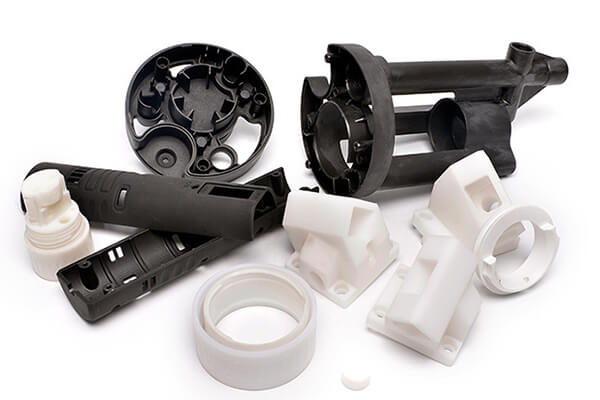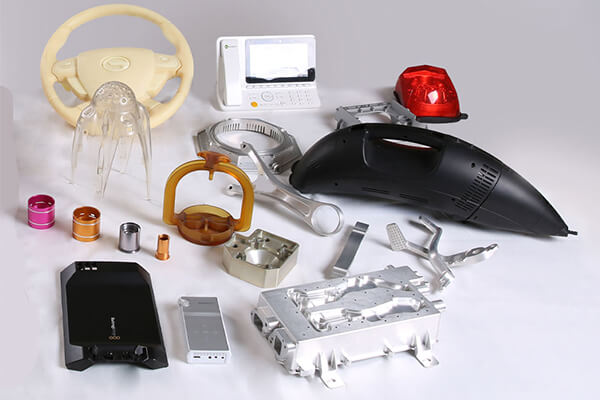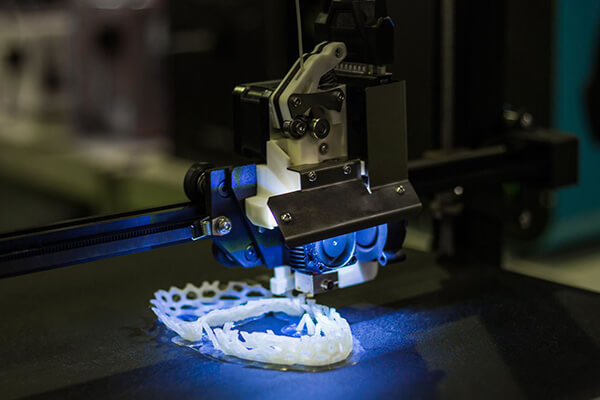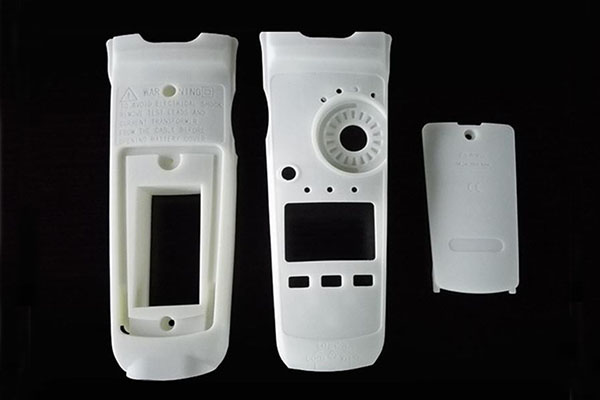Controlling Prototype Cost: Product Development Budgets
What is Prototype?
A prototype is a vital tool in the product development process. It is a preliminary working model or sample of a product or system that is created during the development process. It is designed to test and demonstrate the concept or design of the final product before full-scale production begins. Prototyping is pivotal in product development because it allows for the validation and refinement of design concepts, ensuring that the final product meets its intended goals. Additionally, it serves as a tangible model that reduces risk, increases design accuracy, and increases user satisfaction.
Effective cost management in prototyping involves setting a clear budget, selecting cost-efficient methods and materials, streamlining designs, and optimizing processes. By embracing iterative development, leveraging technology, and standardizing components, product developers can control prototyping expenses while ensuring the product aligns with design objectives and budget constraints. This balance is crucial for successful and cost-effective product development.
Why Prototyping Matters to Prototype Cost?
Prototyping plays a crucial role in determining prototype costs for several reasons. Firstly, it helps validate and refine design concepts, reducing the likelihood of costly design flaws and iterations during full-scale production. Secondly, by testing functionality and materials in prototypes, potential issues are identified and resolved early, saving substantial costs down the line. Thirdly, prototyping enables user feedback incorporation, aligning the final product with customer needs, reducing post-production modifications. Lastly, it allows for efficient risk management by identifying and addressing problems in a controlled and cost-effective manner. Therefore, effective prototyping significantly impacts prototype costs by preventing expensive revisions and ensuring a cost-efficient final product.
What Factors Affect Prototype Cost?
The development of prototype cost can be significantly affected by materials, labor, equipment and technology. By effectively managing these factors, you can make informed decisions during the prototyping process, balancing cost constraints with the need for high-quality prototypes.
Materials
- Material Type: The choice of materials is a fundamental determinant of prototype cost. High-quality or specialized materials, such as aerospace-grade alloys or medical-grade plastics, tend to be more expensive than standard alternatives.
- Material Quantity: The amount of material required for your prototype directly affects costs. Larger, more intricate prototypes consume more material.
- Waste and Scrap: Material waste during the manufacturing process can increase prototype costs. Minimizing waste through efficient design and production practices is essential.
- Material Optimization: Select materials that strike a balance between cost and performance. Minimize waste by designing efficiently.
Labor
- Labor Skill Level: Skilled labor is often needed for complex prototypes, and skilled workers typically command higher wages. The more intricate and specialized the tasks, the more labor costs will impact the overall cost.
- Labor Hours: The time required to design, fabricate, assemble, and test the prototype influences labor costs. Reducing the time spent on these activities can help manage expenses.
- Labor Efficiency: Invest in skilled labor where necessary and optimize labor hours through effective project management.
Equipment
- Equipment Type: The choice of equipment used for prototype development can significantly affect costs. Advanced machinery, such as precision CNC machines or 3D printers with multiple capabilities, may have higher upfront costs but can increase efficiency and precision.
- Equipment Maintenance: Maintenance and calibration of equipment are ongoing costs that should be factored in, as they ensure the accuracy and reliability of the prototypes produced.
- Equipment Rationalization: Choose equipment that matches your project’s needs, and ensure regular maintenance to prevent downtime.
Technology
- Digital Tools: The use of advanced software for design, simulation, and analysis can enhance prototype development but may require licensing fees or subscription costs.
- Digital Prototyping: Leveraging digital prototyping and virtual simulations can reduce the need for physical prototypes, saving material and labor costs.
- Automation: Automation technologies, such as robotic arms or computer-controlled systems, can streamline production but may require initial investments in hardware and software.
- Technology ROI: Evaluate the return on investment (ROI) of digital tools and automation to determine if the benefits outweigh the costs.
Choosing the Right Prototyping Method
Selecting the right prototyping method is crucial in product development. It significantly impacts prototype cost efficiency, design validation, and project success. The correct method ensures accurate representation of the final product, speeds up development, and accommodates design complexity. It also aligns with project budget, time constraints, and material compatibility. Moreover, it allows for iterative development, mitigates risks, and facilitates user feedback. Ultimately, choosing the right prototyping method is a strategic decision that directly influences the quality, cost, and timely delivery of a successful end product, meeting customer expectations and market demands. Here’s a comparison of three popular prototyping methods: 3D printing,CNC machining and plastic injection molding, along with their prototype cost considerations:
3D Printing
- Cost Advantages:
Low Setup Costs: 3D printing doesn’t require expensive molds or tooling, making it cost-effective for small-batch and one-off prototypes.
Complex Geometries: It excels in creating intricate and complex designs without significant cost increases. - Material Costs:
Varied Options: While materials can be affordable, certain specialty materials can be more expensive. The cost of the material depends on the type and quantity used. - Labor Costs:
Minimal Labor: 3D printing processes are largely automated, requiring minimal labor, which can reduce overall costs. - Speed and Lead Time:
Rapid Turnaround: 3D printing allows for quick prototype production, reducing lead times and associated costs. - Iterative Prototyping:
Cost-Effective Iterations: Because it’s easy to make design changes, 3D printing is well-suited for iterative prototyping, potentially reducing overall costs.
CNC Machining
- Labor Costs:
CNC machining significantly reduces the need for manual labor in the manufacturing process. Once a CNC program is set up, the machine can operate autonomously, minimizing the labor required. - Material Costs:
CNC machining can be programmed to maximize material utilization, minimizing waste. This is especially beneficial when working with expensive materials. - Prototyping Cost Savings:
CNC machining is also used for creating prototypes. It allows for rapid prototyping, which can save costs associated with tooling and molds typically required for other manufacturing methods. - Higher Efficiency:
CNC machines can work continuously without fatigue or breaks, which leads to increased productivity and faster production times. This efficiency can result in lower production costs, especially for high-volume production runs.
Injection Molding
- Cost Advantages:
High Volume Production: Injection molding is cost-effective for large production runs due to low per-unit material costs.
High-Quality Surface Finish: It can achieve high-quality surface finishes without additional post-processing, reducing finishing costs. - Material Costs:
Economical for Large Quantities: Material costs per unit are lower for high-volume production, but tooling costs must be amortized. - Labor Costs:
Tooling and Setup: Injection molding involves higher setup costs, primarily related to tooling, which can be significant. Skilled labor is needed for mold setup and operation. - Speed and Lead Time:
Longer Lead Times: Tooling fabrication can take time, leading to longer lead times and potentially higher costs in terms of project scheduling. - Iterative Prototyping:
Costly Changes: Injection molding is less suitable for iterative prototyping due to the expense and time required to modify molds.
How to Estimate Prototype Cost?
Sungplastic estimates the prototype cost according to the following process:
- A collaborative effort among engineers, designers, and prototyping specialists establishes the prototype creation method.
- Calculate costs associated with components and materials.
- Labor costs are projected, drawing from prior experience and project history.
- Potential risks are assessed, factoring in prototype complexity and the potential for unforeseen challenges and material wastage.
- The final calculation incorporates a profit estimate.
How Much Does a Prototype Cost?
Actual prototype cost may vary based on various factors. Because each prototype is a unique blend of art and science, the ranges listed should be used as general guidelines(read Prototype Cost Factors). The following content is only a part of the analysis of the prototype cost, if you want to know more about the price of the prototype, please contact Sungplastic now, we will provide you with an accurate quotation.
3D Printing Prototype Cost
The expense of a basic 3D printed prototype, with minimal post-processing and assembly, typically ranges from $30 to $5,000. The final prototype cost depends on factors like design complexity and size. Examples of such prototypes include uncomplicated plastic items with static components.
It’s essential to note that for prototypes exceeding 12 inches in any dimension, 3D printing costs tend to rise significantly due to limitations in prototyping 3D printers. Moreover, opting for specialty materials can also substantially elevate the overall cost.
Complex 3D Printed Prototype Cost
For prototypes demanding advanced features like electronics, intricate mechanical components, and specialized materials, the cost can range from $500 to $10,000 or more. This range applies to prototypes involving devices such as basic electrical equipment or mechanisms featuring a limited number of moving parts. The overall cost encompasses not only materials and labor but also factors in the expected number of trial iterations and any required custom software or firmware development. Additionally, costs may increase due to the prototype’s novelty, uniqueness, or the need for distinctive production methods.
High-Tech Device Prototype Cost
Developing prototypes for advanced, high-tech devices necessitates specialized equipment and a team of highly skilled professionals, leading to elevated costs. The prototype’s size, intricacy, materials, and components all play substantial roles in determining the overall cost.
In such instances, prototypes are typically created in stages, beginning with a proof of concept prototype, followed by functional and engineering prototypes, and culminating in a pre-production prototype. This incremental approach helps control expenses and effectively manages the inherent risks associated with prototyping.
How to Reduce Prototype Cost?
When starting prototyping, there are a variety of ways to save money without compromising quality. Here are some valuable cost-saving strategies:
- Choose Budget-Friendly Materials:
Utilize cost-effective materials like cardboard or foam core instead of pricier options such as wood or metal.
Consider recycling materials, readily available at local hardware stores or online, to further reduce material expenses. - Explore Free or Low-Cost Software:
Employ freely available or low-cost software for prototype design and development. - Professional Prototyping Service:
If seeking a polished, high-quality prototype, invest in a professional prototyping service, despite its cost, to ensure a professional finish. - Leverage 3D Printing:
Harness the speed and affordability of 3D printing through online services that offer budget-friendly rates. - Craft Custom Molds:
If your prototype requires metal or plastic casting, consider crafting your own molds using mold-making kits available at hobby stores. - Utilize CNC Machines:
If you have access to a CNC machine, take advantage of it for cost-effective prototype creation, recognizing that CNC machines can be expensive to acquire outright. - Repurpose Recycled Parts:
Incorporate recycled parts into your prototype, sourcing them from junkyards or online sources (if applicable). - Consider Prototype Sales:
Explore the possibility of selling your prototype to interested companies or individuals after its creation to offset development costs.
How can Sungplastic Help You?
One of the first steps in bringing a new product to market is prototyping, an expensive and time-consuming process, but often a critical step for businesses to validate their ideas and gain feedback from potential customers. Evolving from a concept to a prototype, a model or preliminary version of a product, helps determine the size and potential market viability of the product. With many iterations, the prototype is gradually refined, and finally becomes the final product.
With the help of Sungplastic, you can gain insight into the main costs required to go from concept to production of physical products, so that you can fully prepare for developing effective strategies.
Sungplastic has an experienced prototyping team that will assist you in realizing the concept of your product and making it a reality. Contact us today to start your journey to successful prototyping and product launch.
About Sungplastic
Sungplastic is a plastic product manufacturer with rich experience in injection molding. According to the different product development requirements, we flexibly adjust the manufacturing process to achieve high quality, high efficiency and more economical.
We offer a variety of manufacturing services: Rapid Prototyping, Tool Making, Injection Molding, Product Design and Development, CNC Machining and Metal Stamping. You can choose from a variety of plastics, silicone rubber, or metal for your product. Regardless of mass production or small batch customization, Sungplastic has always been committed to providing assured, efficient and more economical one-stop processing services for your projects.
Contact us for a free quote and project review.
Get a free quote and design analysis today.
We’ll reply you within 6 working hours. We respect your privacy.





